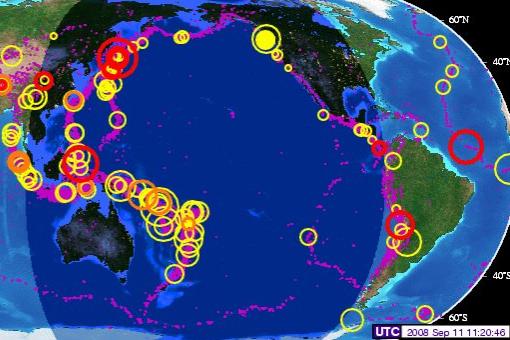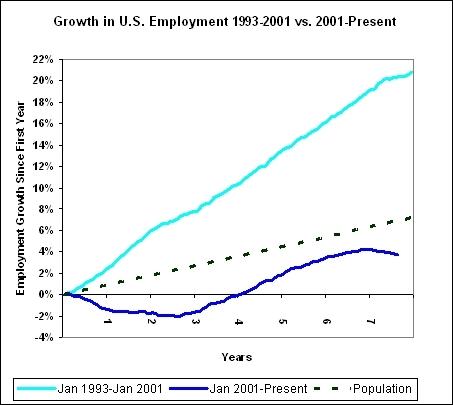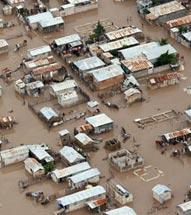Quake Patterns
Several strong quakes occurred within hours of each other. A 6.4 shook the Mid-Atlantic Ridge on
September 10, and less than 12 hours later there were dual quakes of 6.9 in Japan and 6.6 in Indonesia on
September 11. The quakes on the Pacific Rim were deep, meaning the plates themselves were making
significant adjustments. Of note is the timing of the quakes, almost 12 hours apart at the Face and Dark
points when the Sun and Planet X are positioned over the Atlantic Rift (UTC 00:00) and at the opposition
point, when the Sun and Planet X are positioned on the opposite side of the globe (UTC 12:00).
11-Sep-2008 00:20:52 6.9 Hokkaido, Japan Region
11-Sep-2008 00:00:02 6.6 Halmahera, Indonesia
10-Sep-2008 13:08:15 6.4 Central Mid-Atlantic Ridge

- Major Quakes Hit Japan and Indonesia
September 10, 2008
http://edition.cnn.com/2008/WORLD/asiapcf/09/10/asia.quakes/index.html
- A magnitude 6.9 earthquake rattled Japan on Thursday, within minutes of a magnitude 6.6
earthquake in Indonesia. The Indonesian quake occurred at exactly 9 a.m. The Japanese
quake occurred at 9:21 a.m. The quake's epicenter was offshore and about 21.7 miles below
the Earth's surface. The Indonesian quake was much deeper - about 57.9 miles.
There are two trends evident in this series of quakes. The first is how slippery the edges of the plates have
become, so that an adjustment in one place quickly translates to an adjustment in another place. This rapid
ricochet was noted in the Zetatalk Newsletter on June 8, 2008, and the Zetas were asked to address this
during the live GLP chat on July 19, 2008.
Question: The recent 6.8 earthquake in Japan followed some hours later by a 6.8 Santa Cruz
Islands region. I have this theory on a "ping pong effect" that when a big enough quake hits
somewhere that it will "ping pong" to another part of the world and be around the same strength.
ZetaTalk Response 7/19/2008: We have mentioned that the Earth plates have loosened up, so that
they can slide against each other more readily and slide further than before since the rock fingers
that caused the fault lines to cling to each other have been broken off. We have also mentioned that
quakes have started to increase in magnitude and frequency almost exponentially. Based on this,
why should it be surprising that a major adjustment somewhere in the Pacific has repercussions
elsewhere around the Pacific Rim?
The second trend is the Face/Dark timing of major quakes, a trend which was evident when Planet X
arrived in the inner solar system in 2003 and was first captured on the live seismographs on May 26, 2003.
The pattern is obvious, with dual shuddering at approximately the noon position over the Atlantic (12:00
UTC) and 12 hours later at the midnight position on (00:00 UTC). This is due to Planet X gripping the
highly magnetized Atlantic Rift. This pattern was also evident during the series of strong quakes on
September 10-11, 2008.

ZetaTalk Explanation 6/22/2003: Global Quakes are times when the crust adjusts, weak points
under stress finally snapping, often in unison as one point giving will change the dynamics at
another point, and as the plates are tightly locked down, the whole globe shudders in unison. Now
comes Planet X, gripping the Atlantic Rift such that rotation around the core is urged to stop. The
tightly locked plates will suddenly snap, allowing sudden and strong subduction or compression
along the Pacific Rim, this then allowing sudden stretch along the Atlantic Rift, so that strong
quakes, tsunamis, volcanic eruptions, destabilized cities along the stretch zone, and disconnected
road and railways result.
Where is this heading? The Zetas have stated that quakes are no longer increasing at a linear rate, but have
begun to increase on more of an exponential rate.
ZetaTalk Prediction 12/15/2006: Where such activity was more linear in years past, it will become
exponential at some point, and this turning point has already arrived. Several factors add to the
stress Planet X is experiencing. The closer Planet X comes, the more intense the Earth wobble
becomes. The wobble pattern does not change as it intensifies, it increases in force and scope. The
push is stronger and faster, and the swing back likewise stronger and faster. And the degree of
wobble, how far the Earth swings, will steadily increase. The Earth wobble is palpable, measurable,
and can be documented to show the figure 8. The effect on the Earth's plates is to increase
continental drift, or rip as we prefer to call it. And after months and years of this type of tugging,
the edges of the plates have worn smooth, rock fingers breaking off, so rapid and dramatic
movements of the plates are now possible. What will happen to the Earth, wobbling in an
increasingly forceful figure 8? Certainly her plates will move, and where this occurs in subduction
zones, jolting quakes and volcanic activity will follow. And where this occurs in stretch zones, the
sinking and thinning ground will create chaos for cities or infrastructure above and will also allow
magma to bubble up to the surface. The quakes are quickening.
Even with the USGS trying to underrate the magnitude of quakes, and removing quakes from the quake
database so that their frequency is underreported, the people of the world will notice the increase. How
could they not? Thus, quakes will increasingly be in the news!
Question: The number of quakes being shown on the USGS for North America has increased
dramatically over the recent weeks. Previously, the average number was around 600 but has now
swelled to more than 1400. Will the USGS see fit to comment on this increase, or will they stay
quiet or alternatively, will they simply edit more of the quakes out to bring the number back down
to previous average levels?
ZetaTalk Response 5/3/2008: The USGS is dropping quakes all the time, especially when they are
too small to be felt. Part of the increase in quakes we have predicted is that they are getting large
enough in magnitude to be felt by the populace. Thus simply dropping them is not as easy as this
practice now raises questions. It is doubtful that the USGS will come out with any explanation. But
if forced to do so they would likely just say that historically there are active and inactive periods,
and no one knows why.
Freddie and Fannie
As the corrosive subprime mortgage mess eats its way through the banks and mortgage holding
companies, the giants Fannie Mae and Freddie Mac succumb.
- U.S. Near Deal on Fannie, Freddie
September 6, 2008
http://online.wsj.com/article/SB122064650145404781.html?mod=hpp_us_whats_news
- The Treasury Department is putting the finishing touches to a plan designed to shore up
Fannie Mae and Freddie Mac, according to people familiar with the matter, a move that
would essentially result in a government takeover of the mortgage giants. The plan is
expected to involve putting the two companies into the conservatorship of their regulator,
the Federal Housing Finance Agency. That would mean the government would take the reins
of the companies, at least temporarily. It is also expected to involve the government injecting
capital into Fannie and Freddie. That could happen gradually on a quarter-by-quarter basis,
rather than in a single move. Treasury's plan includes a top-level management shakeup at
both companies.

The amount of money the US may have to pump into these mortgage giants is estimated to be $100 billion
or more. Just where does the US get all this money? The subprime mess on top of the Iraq War expense -
a bottomless black hole. Is China still buying US bonds?
ZetaTalk Explanation 9/6/2008: The US is printing money, and has been for over a year. This is why
the Fed's rules on M3 reporting was changed, making the source of funds for the Federal Reserve
secret. You are to assume that some country or wealthy individuals bought bonds, but you cannot
verify this. Of course, printing money to solve a country's woes leads to a "banana republic"
situation, wherein the paper money from that country soon becomes worthless. Each dollar printed
dilutes all the others, so that the rate of inflation increases. This is already the problem in the US,
but the bankruptcies of Freddie and Fanny are considered a problem that will make it all worse. All
citizens in the US are made to pay, not only via taxpayer funds, but by inflation, which robs them of
the value of their savings and wages.
The US government is still claiming the US is not in a recession, despite the obvious signs that this line had
been crossed. The US government controls the statistics on joblessness and employment, using a
mathematical birth-death factor in their computation which essentially states that if births have occurred,
then employment must be in place. This factor dominates their calculations. In addition, those claiming
unemployment compensation fall off the rolls when their time runs out, so they are no longer officially
"unemployed". Then there are the alarming number of workers who have been forced to accept part-time
work, or work beneath their pay grade. Nevertheless, the job loss under George W. Bush is obvious, and
cannot be hidden.
- Economists May Not Call It Recession, But Job Stats Say It Is
September 6, 2008
http://www.huffingtonpost.com/2008/09/06/economists-may-not-call-i_n_124556.html
- The combination of falling home equity, the rising cost of food, health care and housing,
tighter credit and eight straight months of job losses -- 84,000 in August alone - has put the
squeeze on middle-class families struggling to stay afloat in a slumping economy. Although
economists haven't yet labeled the economic downturn a recession, every time payrolls have
declined this consistently since 1948 the economy has been officially in recession. For job
hunters, this summer has been unforgiving. The number of people out of work for six months
or more jumped by 160,000 from July to August. And the number of workers who want
full-time employment but can't find it has hit 10.7 percent - a recessionary level.

ZetaTalk Explanation 12/22/2007: Despite the chirping in the media, announcing government
statistics which are all lies, the economy is not doing well and has not been doing well for some
time. Job statistics are made up, using birth/death statistics. They do not count jobs! They fabricate
the numbers! Inflation is rampant, almost 20% for food at present, yet it is claimed to be some low
percentage as they just exclude food and gas from the computation! The dollar is plunging. The
DOW is artificially maintained to give the appearance of wealth for those who invest, but the stock
is increasingly worthless, or certainly not worth what is claimed. This will only increase, as will
bankruptcies among both corporations and private individuals alike.
Per the Zetas, the word "depression", not "recession" applies. These words dare not be uttered by the
media, as the establishment hopes that the public does not notice the dire state of the economy.
ZetaTalk Overview 6/28/2008: Our predictions have unfolded. We stated in 1995 when ZetaTalk
started that the Earth changes would cause economic distress. Crop failures, imploding cities, flood
ravaged lands - all of this reduces the standard of living and takes time and resources. Businesses
become distressed. Governments find it hard to collect taxes and care for their citizenry. The
behavior of the Bush administration was also predictable, with their invasion of Iraq for the oil.
Being aware of the pending passage, they bankrupt the US, without a care. Now the dollar is
dropping because of the Bush administration's incompetent management. This impacts the price of
everything within the US for the average US citizen. We predicted in 1999 that the US stock
market would fall to ¼ of its worth, and it is already at the ½ point due to inflation and the value of
the dollar. A Dow level which was at 12,000 in 2000 is worth only 6,000 points today, in real value.
As we have been stating regularly, it will get worse, and price freezes and limited banking hours
may be imposed.
Haiti Flooding
The Zetas have long warned that islands in the Caribbean are vulnerable during the pole shift, due to their
position on minor plates that will be crushed between the giant S America and N America plates.
ZetaTalk Warning 2001: The islands in the Caribbean will be utterly devastated during the coming
shift, hit from several sides. When the Americas move into the Pacific, shortening the distance
around the Pacific Rim and widening the Atlantic, the giant continents of North and South America
will not simply drift evenhandedly westward. Moving plates move in the direction of least
resistance, which in this case is toward the middle of the Pacific hole. Central America loses in this
crunch, as do the smaller plates supporting the Caribbean islands. Any island surviving this crush,
where smaller plates will subduct under larger giants, will have to deal with tidal waves washing
over them and exploding volcanoes. Going to sea in boats will scarcely be an answer, as the
turmoil the water will be undergoing will create vortexes that will capsize large and small boats,
and even dash well built submarines in deep water. Surviving in the Caribbean, during this violent
shift, will be the exception, and will require luck, not planning.
Some islands may not even make it to the time of the pole shift. Haiti was inundated with storm surge
during the passage of Hurricane Hanna, and inundated with floodwaters from the hills during the deluge. If
storms will become more frequent, and more fierce, will Haiti survive?

- First Aid Ship Arrives in Flooded Haitian City
September 5, 2008
http://www.breitbart.com/article.php?id=D930NFN80&show_article=1
- A ship carrying 33 tons of U.N. relief supplies docked in Gonaives, the first significant aid
delivery to tens of thousands of people who have gone with little food or clean water for four
days. Hurricane Hanna's floodwaters inundated more than half the homes in Haiti's
fourth-largest city when it struck, and corpses surfacing in the muddy wreckage as
floodwaters receded have raised the known death toll from Hanna in Haiti to 137. All land
access into Gonaives was cut by the storm, with bridges collapsed, roads washed out and
trees fallen down. Gonaives-a collection of concrete buildings, run-down shacks and plazas
with dilapidated fountains-lies in a flat river plain between the ocean and deforested
mountains that run with mud even in light rains. Hanna swirled over Haiti for four days,
dumping vast amounts of water, blowing down fruit trees and ruining stores of food. Many
houses were torn apart. Families huddled on rooftops, their possessions laid out to dry.
Overturned cars were everywhere, and televisions floated in the brown water.
In addition to the crushing plates during the pole shift, islands in the Caribbean must deal with a rising sea
level. The Zetas have predicted a rise of approximately 675 feet within two years after the pole shift. Few
places in the Caribbean will be above water, and those that are often have volcanic activity with which to
contend. Not a pretty picture.
ZetaTalk Warning 3/1/2008: The rising sea level will only affect coastlines. The rise occurs over a 2
year period after the shift to a height of 675 feet approximately. But as we have stated from the
start of ZetaTalk, there will be drizzle and rain, at times seemingly continuously, for years after the
pole shift. The pole shift itself tears away much of the atmosphere, so the clouds are low. For rivers
or lakes to rise is dependent upon their drainage. Some drainage will change, be blocked, or empty
into the rising oceans so the water backs up. You must compute your elevation to determine the
likely outcome.
You received this Newsletter because you Subscribed to the ZetaTalk Newsletter service. If undesired, you can quickly
Unsubscribe.
|

